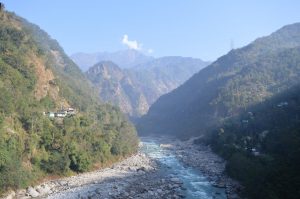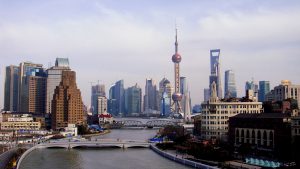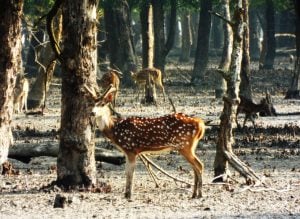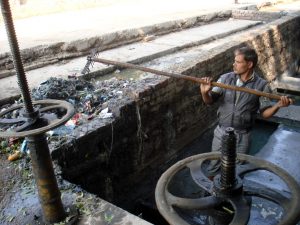The MV Aichgati, a lighterage vessel loaded with a thousand tonnes of pit coal, sank in the estuary of Konga River in Bangladesh on Friday January 13. Until late Sunday, more than 48 hours after the accident, there had been no progress in salvaging the ship, while the pollution caused by the wreck kept spreading.
Environmentalists see this as proof of their fears that the coal-fired Rampal Power Plan Project will be a catastrophe for the Sundarbans, the world’s largest mangrove forest on the India-Bangladesh border, and a World Heritage site.
The Sundarbans is criss-crossed by water bodies, channels, creeks, rivulets and rivers. There are more than 400 water bodies flowing through the Bangladesh part of the Sundarbans, over an area of 6,000 square kilometres. The ship sank where the Pashur and Shibsa, two of the three major rivers of the mangrove forest, meet.
The MV Aichgati started its ill-fated journey at dawn on Friday for Noapara, the business hub of the south-western district Jessore, and sank at around 9:30 a.m. after cracks developed in its hull and water reached its engine room. Another vessel, transporting fly ash, rescued the 12 crewmembers and four security guards.
The MV Aichgati was offloading coal from the MV Lady Merry, an Indonesian transport vessel, which had brought coal from South Africa. Lighterage vessels like the MV Aichgati transport cargo from sea going vessels, which cannot enter shallow waters, to inland ports. The MV Lady Merry started unloading its cargo on Wednesday, and a dozen lighterage vessels were carrying the coal to Noapara along the Konga and Pashur river channels.
Slow response, no rescue ships available
The harbourmaster of Mongla port Mohammed Waliullah told thethirdpole.net that the sinking of MV Aichgati had not disrupted the regular operation of vessels through the main channel. He said that the sea was choppy after the incident and it was very difficult to locate the sunken vessel.
Though the central authorities are yet to comment on the accident, the Mongla port authority had asked the Noapara traders to take necessary steps to spot and salvage the vessel. The rescued crews have reported to the Mongla police station. Owner of the sunken ship Kazi Golam Faruk has said that they are assessing the salvage plan. It can take a few days to start salvaging the ship. The outcry, though, has led to the government registering legal cases against the owner and master of the ship.
Hasan Mehedi, based in Khulna and editor of Mangropedia, an initiative on the Sundarbans, told thethirdpole.net that the authorities have no plan to respond immediately after such accidents. It will take at least three days for the rescue ships Hamza and Rustom to come to the spot.
History of disasters
A day after the wreck, the NGO Waterkeepers Bangladesh said this was the fifth ship or vessel sinking incident in and around the Sundarbans over the last two years. In December 2014, an oil tanker sank near the Chandpai dolphin sanctuary; five months later, in May 2015, a cargo vessel carrying potash sank in the Bhola river; in October 2015, a barge transporting 570 tonnes of coal capsized near the Dhangmari dolphin sanctuary in the Pashur river; and in March 2016 another cargo vessel transporting 1,245 tonnes of coal sank in the Shela river.
![A history of accidents [map courtesy Waterkeepers Alliance]](/wp-content/uploads/2017/01/Map_02_Coal-Barge-Sank-in-Estuary-of-Pashur-River_Waterkeeper-Alliance-.png)
No lessons learnt
The latest incident comes despite repeated concerns raised by environmentalists. Syeda Rizwana Hasan, Chief Executive of the Bangladesh Environmental Lawyers Association (BELA) , told thethirdpole.net, “Instead of learning any lesson from these extremely dangerous incidents, the government is adamantly pursuing its plan to have the Rampal coal plant and to allow coal-laden ships to ply on waterways connected to the world heritage site.”
See also: Bangladesh struggles to fund controversial Sundarbans coal project
Sharif Jamil, Coordinator of Waterkeepers Bangladesh, said, “If the Rampal coal plant is built, it will require hundreds more coal ships and barges to travel through the Sundarbans. This is one of the many reasons why the World Heritage Centre and International Union for the Conservation of Nature concluded that the proposed Rampal power plant poses a serious threat to the Sundarbans and should be cancelled.”
According to an environmental impact assessment of the Rampal project, referred to in the The Daily Star newspaper of Dhaka, sea going vessels will bring 80,000 tonnes of coal and offload it at Akram Point off the Sundarbans. Lighterage vessels will transport this along the Pashur river to the plant, which will require 10,000 tonnes of coal a day. This means that several vessels will be constantly operating along the Pashur through the forest, increasing the vulnerability of the Sundarbans.
![<p>A lighterage vessel on the Pashur [image by Sharif Jamil]</p>](https://dialogue.earth/content/uploads/2017/01/lighterage-vessel-in-Pashur-by-Sharif-Jamil-300x225.jpg)








